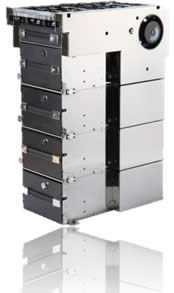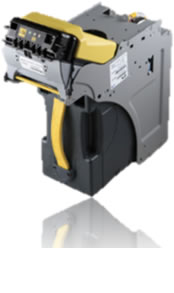Knowledge Centre
We pride ourselves on knowing the ins and outs of what we provide, not only giving expert advice and guidance but having a vast range of product knowledge to give you the best possible experience in payment solutions.
We have created our centre to share some of our knowledge across a range of our products to help with any questions you may have. This may also assist you in helping you choose a suitable product from our catalogue.

- Card schemes – VISA, Mastercard, American Express etc.
- Acquirer – the bank that process the transaction, e.g. Globalpay, Worldpay, Elavon etc.
- Merchant – the customer who accepts the payment from the customer, e.g. a car park operator.
- Payment gateway – the link between the merchant and the acquirer, they will accredit their solution with one or more acquirers.
- Hardware manufacturers – Ingenico, Verifone etc.
- PCI – Payment card Industry security standards council – responsible for setting common standards for the payment card industry.
What factors do I consider to accept credit card payment in an unattended environment?
Acquirer / Gateway
We recommend you first consider the Acquirer, are you set on using a particular acquirer? If so we can advise who has a solution with that acquirer, it is not the case that every payment gateway will have a solution with every acquirer. If the acquirer is not pre-set then select a payment gateway, they will have a list of supported hardware devices. The payment gateway will provide their software that interfaces between the payment hardware device and their processing centre, this reduces the requirement to develop your own software from scratch, it’s not plug n play but saves a massive amount of work.
Hardware
Hardware devices are designed for two environments, indoor and outdoor, the hardware you choose should be suitable for the environment it will be used in, unattended devices are built to a different standard than indoor devices, they are designed to withstand moisture ingress, temperature extremes and impact attacks, they have in built tamper switches which activate if an attempt to open the device is detected and have a password controlled activation mechanism. All new devices will conform to PCI PTS 3.x or above which is the security standard for hardware devices as defined by the PCI.
There are different combinations of hardware available; you will need to consider the devices that suit your application best. Devices available are;
- Pinpad – this allows the entry of PIN’s.
- Card reader – reads the credit card usually by the chip but also has the capability of reading the magnetic stripe if the card is non EMV.
- Contactless reader – reads contactless cards or other contactless enabled products (e.g. wristbands) as well as Near Field Communication (NFC) devices such as Apple pay.
Having all three devices will cover all possible options for card payment, but not all transactions require a PIN entry as the transaction value may be under the limit where a PIN is necessary, in this situation you could not have a Pinpad and thereby have a lower hardware cost.
Some manufacturers have a modular product, i.e. each device is separate and connected via cables and some solutions are all in one’s, i.e. a card & contactless reader in one device. You can see the different form factors on our website under products.

HWE are an approved P2PE hardware distributor for Ingenico products.
What are the benefits of P2PE?
You will qualify for a reduced assessment via the PCI P2PE Self-assessment questionnaire which is greatly reduced from the non P2PE Self-assessment questionnaire, thereby reducing the time and cost spent ensuring PCI compliance.
No cardholder data will be held within your network in un-encypted form reducing the risk of a data breach and any associated fines and loss of reputation costs.
Strict controls on the payments devices that have a proven “chain of custody” ensuring only authorized suppliers are involved in the supplier chain.
What’s different with a P2PE solution?
The Pin Entry devices (PED’s) will have been key injected in a secure facility and stocked at an approved location, only approved distributors can supply these devices.
You must comply with the requirements of the solution providers Point to Point Encryption Manual (PIM), this ensures devices are only sourced from approved sources and outlines the controls and checks the merchant must comply with.
What happens during a P2PE transaction?
When a card is inserted into a P2PE pinpad the card data is securely encrypted and then transmitted over the network to the payment gateway and acquirer. Once received by the payment gateway it is decrypted in a secure data zone and passed to the acquirer for processing thereby ensuring no cardholder data is exposed at any time in the merchant’s network.
How can HWE help you find a P2PE solution?
We partner with NMI who provide a PCI validated P2PE solution, working with HWE, NMI and our Acquirer partners we can provide a complete P2PE solution.
Only PCI validated P2PE solutions will reduce the scope of your PCI assessment, you can check this on the PCI website at https://www.pcisecuritystandards.org/approved_companies_providers/validated_p2pe_solutions.php only solutions listed here have been PCI validated.

These devices store and dispense large volumes of bank notes, there is only a dispense function so the devices would need to be manually replenished with bank notes and encased in a secure housing. Bank notes are stored in individual cash cassettes and on command are withdrawn from the cassette and transported via rubber belts and rollers to be dispensed, rejected notes, where the optical sensors cannot verify a single note, will be sent to the reject tray.
These devices are often called CDM’s (Cash Dispensing Modules).
What should I consider when choosing a bank note dispenser?
Dispense method
There are two methods for the CDM to dispense notes, either “spray” type where the notes are exited via the top of the dispenser one after another and a tray has to be incorporated into the host machine to receive and hold the notes, you would typically see this in a self-service machine / check-out. In this set-up the notes are usually sprayed long edge first but it is possible to have short edge dispense on some models.
The other method is “presenter” type where the notes are bundled together and presented to the customer, this is what you would see at an ATM.
Dispense configuration
In a CDM each denomination of note will require its own cassette, the number of different cassettes available varies by machine but is typically between 1 and 6, within the cassette the number of notes that can be held will vary by model from 500 notes to 3,000 per cassette.
Note size
Check that the notes you want to dispense will physically fit in the dispense tray, many dispensers will be in the 60mm ~ 82mm range which will exclude some notes, note length should also be checked, some very long notes may not be accommodated by some models.
Communication protocol
These devices all work in serial protocol, there is no off the shelf software to control these devices, the user must write their own application to instruct the CDM using standard commands.

If you just want to accept bank notes only then you will need a Bank Note Acceptor (BNA), if you want to accept and dispense notes from the same unit then a Bank Note Recycler (BNR) will be needed.
What does a bank note acceptor do?
Bank Note Acceptors (BNA’s) will test authenticity of a note inserted with high accuracy in a relatively short time via a number of optical and electromagnetic sensors. The more sensors that are fitted, the more reliable and faster operation a bank note acceptor performs and the more expensive it is. Nearly all BNA’s are single escrow which means that only one note can be accepted at a time, multi-escrow BNA’s are available but will be more expensive.
What should be considered when choosing a bank note acceptor?
Stacker vs Stackerless
Bank Note Acceptors (BNA’s) come in two physical forms, a stacker where the note is accepted, validated and then drawn along a motorised path and stacked in a cashbox. This provides a compact form factor and allows for easy handling of the notes. On the downside the capacity of notes that can be accepted is limited, cashbox sizes vary between 100 notes and 2,200 notes, also jams may occur as the note is transported to the cashbox. Stacker BNA‘s are usually available as a Up stacker where the body of the unit is above the note aperture or a Down stacker where it is below.
Stackerless BNA’s do not have a cashbox attached, once accepted the notes are pushed out the rear of the BNA and freefall into a cashbox that is not included as part of the unit. This means the size of the BNA is reduced over a stacker, the price will be lower and there is less risk of notes jamming as the transport path is much less.
Communication protocol
You should consider what the BNA will be connected to, usual communication protocols for BNA’s are Pulse, Parallel, ccTalk, RS 232 or MDB, some manufacturers have developed their own protocols. Which protocol your application is communicating in will define what acceptors are suitable, some models of BNA’s have all protocols available but the more expensive BNA’s are usually RS 232.
Other factors to be considered
Each currency will need to have its own software (called a billset) to accept the notes within that currency, check the currency you want to accept is supported by the manufacturer and the individual notes are part of the billset, note that different denominations in most currencies are different sizes and the notes a BNA can accept will be constricted by the physical width and length of the notes.
If a new note is released for the currency you are accepting the BNA will need updating, most manufacturers will provide the new billset without charge but you will likely need either a programming cable and or special software to re-programme the unit, it is probably worth buying any supporting tools like this at the start.
What does a Bank Note Recycler (BNR) do?
This type of unit will accept and dispense bank notes, as well as storing the received notes in a cassette (like a BNA) it has the ability to store some of the denominations in a separate cassette from which it is possible to dispense notes. Thereby having the function of giving change on a larger note that has been accepted, for example if a £20 was accepted and change of £15 was required it could dispense one £10 note and one £5 note back to the customer. The capacity of notes that can be dispensed will be limited by the size of the recycling cassette. If you need to dispense a large number of notes then a bank note dispenser may be a better choice.

There are a number of different types of products to accept and or dispense coins, if you want to accept coins only then a coin acceptor will be suitable, these may be called different names by different manufacturers, coin selectors / coin acceptors / coin validators but all refer to the same type of device. If you want to give change then a change-giver or a coin acceptor with separate pay-out hoppers could be suitable.
We are only looking at electronic coin acceptors here, mechanical coin acceptors are available if required but will not have the level of sophistication of electronic acceptors.
What does a coin acceptor do?
These devices will accept coins and validate their authenticity very quickly by comparing the physical properties of the coin against known characteristics of acceptable coins. The detector evaluates the coin based on its weight, size, magnetism and using optics to match the image to a pre-defined list, or test the coin’s “metallic signature” based on its alloy composition.
Once validated the coin acceptor will then send an appropriate electrical signal via its output connection to the host machine.
What should I consider when choosing a coin acceptor?
Size
Coin acceptors are available in two form factors, 3.5″ in diameter are the more compact size that will provide excellent reliability where space is limited. Coins will normally be validated and then fall into a cash box that is not supplied with the acceptor, although some models will have optional sorting methods. The larger 5″ version will have the same functionality as the smaller one but have more routing options for sending the coins to different locations, so the coins exit the bottom of the acceptor in a pre-defined slot, usually there are four or six sorting directions, these acceptors would typically be used when coin hoppers are being used.
Communication protocol
Normal protocols used by coin acceptors are Parallel, ccTalk / MDB, direct USB connection is also available on some models, cabling will usually be extra or supplied by the customer.
Coin acceptance rate
As well as understanding the acceptance level vs rejected coins it would be good to find out the speed with which coins can be accepted, some acceptors are especially quick at accepting which may be important in some applications, e.g. gaming.
Coin insertion / rejection position
There are many different directions a coin can be accepted and rejected by the acceptor, e.g. top entry & front exit, front entry & bottom exit etc, ensure the direction of entry / exit you require is supported.
Mounting
Coin acceptors can be supplied with a faceplate for mounting directly onto a surface, faceplates vary in size and material, i.e. plastic or metal, the other option is chassis mount so without faceplate, these models will be mounted behind the surface in a chassis and will be suitable where other accessories are used for routing or holding coins in escrow.
Other factors to be considered
Each currency will need to have its own software (called a coinset) to accept the coins within that currency, check the currency you want to accept is supported by the manufacturer and the individual coins are part of the coinset, some low value coins may not be supported in all currencies. Check also for unusually sized coins, some acceptors may not be able to accept these.
If a new coin is released for the currency you are accepting the coin acceptor will need updating, many manufacturers will charge for the new coinset file and likely you will need a programming cable and / or special software to re-programme the unit, it may be worth buying any supporting tools like this at the start or you can send units back for update as the programming tools can be expensive.
Accessories
A complete chassis system is available on some acceptors, this has a metal chassis to house the coin acceptor, a motor reject to open the door of the coin acceptor to clear jammed coins, an anti-pin to stop unwanted foreign objects being inserted into the mouth of the acceptor and an escrow to hold inserted coins whilst the transaction is finalised.
If you want to accept coins and give change then there are two options
- Use a coin changer, this can accept coins and store certain coins in tubes and give change back from the same unit, these are typically seen in vending machines. These devices provide a compact solution where the amount of change required is not too great, you will need to consider your maximum accepted value vs the amount of change you can dispense, so if your application accepted a £20 note and the vend price was £1.00 you would need to give £19.00 back in change, it wouldn’t take too many transactions like this to empty the coin tubes.
- If there is a requirement to give higher values of coin change back then it may be better to use a coin acceptor to accept and validate coins then coin hoppers underneath to hold and dispense change, this will increase the capacity to give change back, you might see this set-up in a transportation application.


